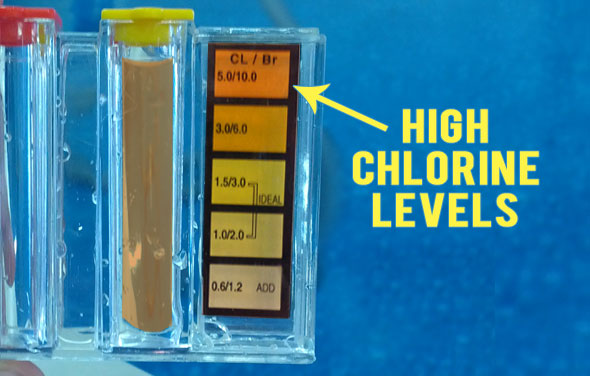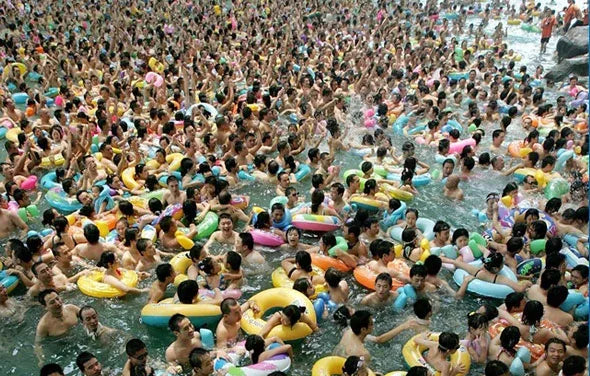How to Raise or Lower Levels of Chlorine
This tutorial demonstrates how one can raise or lower levels of pool chlorine in their swimming pool. Always test the water before adding any chemicals.

This tutorial demonstrates how one can raise or lower levels of pool chlorine in their swimming pool. Please remember prior to adjusting the levels of chlorine to always test your water first to see the before and after of your pool maintenance efforts.
HydroTools Deluxe Dual Chlorine & pH Liquid Test Kit
Two way test kit tests for pH and chlorine levels. Deluxe two vial design with color keyed indicator solutions. Includes instructions and storage case. Learn more...
Raise the Level of Pool Chlorine
Raising pool chlorine can be much easier than trying to lower chlorine levels. Simply adding chlorine in the form of chlorine tablets, granular chlorine, liquid shock or powder shock will increase the total amount of chlorine within the pool. It is always better to start small when adding chlorine to avoid over chlorinating and test your levels to see if the pool will require more chlorine to be added after.

In this scenario you would need to lower the level of pool chlorine.
Pool Chlorine
Chlorine is the number one used pool chemical. We sell Chlorine in 3″ Chlorine Tablets and Chlorine Granular form.
Shop ProductsLower the Level of Pool Chlorine
It is much more difficult to reduce the amount of total chlorine within an above ground swimming pool than it is to increase it. One of the only ways bring it down is to leave your pool uncovered and in direct sunlight. Sunlight eats away the total chlorine within the pool. That is the same reason that it is important to test your pool water more frequently during hot weather as your pool is more likely to turn green from lack of chlorine. The only other way to reduce chlorine is to drain some of the water and add fresh water. This will dilute your current water and the chlorine levels along with it.

In this scenario you would need to raise the level of pool chlorine
Test First! Then Adjust.
Always test your water and do not assume that because your eyes or skin are irritated that your chlorine level is high. Irritation can be caused by chemical imbalance. (e.g. low PH or Alkalinity levels.). Testing your water should always the first step in diagnosing if you need to raise or lower levels of pool chlorine in your swimming pool.
"I continue to add more and more chlorine/shock and the total chlorine remains low or at zero!"
If you are attempting to bring your chlorine level higher by shocking your swimming pool and your test results still read zero total chlorine, you may have something called chlorine lock. Try finding test strips that will test your TDS level (Total Dissolved Solids) and see what the test shows. You can also try an Oxy-Shock or Non-Chlorine shock. This sometimes acts as a reset for your pool water and will allow the water to accept the chlorine shock next time you add it.
Solaxx SafeDip Digital Chemistry Tester
The SafeDip is a digital chemistry reader designed to make measuring pool parameters easy. Simply collect the water sample from the pool using the onboard cup and press the Start button to take your measurement. Learn more...
Shock the Pool After a Party!
If you have had a lot of people in your pool in one day it is always a good idea to shock your pool overnight. This will give your pool a high chlorine reading and allow the chlorine to oxidize and clean the water. Generally after shocking your pool you should wait to swim at least 8-12 hours until chlorine levels come back to normal (1-3ppm). This is one of the few times that having a high chlorine level is a good thing. Always test your water before swimming again to make sure your chlorine levels are safe.



















